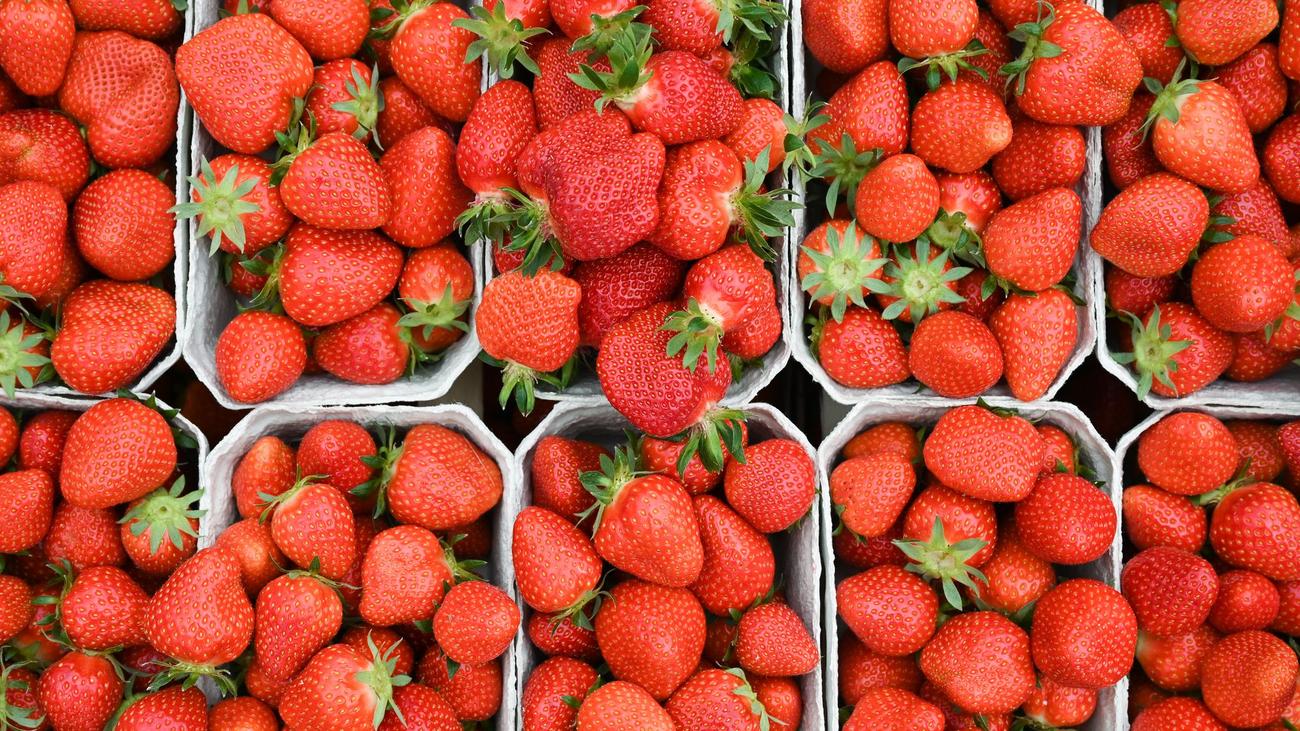
Thuringia’s Strawberry Season Begins Amidst Challenges and Hope
The vibrant red hues of freshly harvested strawberries are once again gracing Thuringian markets, signaling the official start of the strawberry season. Despite sunny skies, the state is experiencing cooler temperatures, creating unique challenges for local growers. According to the Thuringian Ministry of Agriculture, the beloved fruit, painstakingly harvested by hand, is cultivated by 16 dedicated farms across approximately 141 hectares of land.
Notably, a significant portion, around 54 hectares, represents new plantings that will not yield fruit this year. This underscores the ongoing investment in the sector, while simultaneously highlighting the immediate constraints faced by producers. Thuringia’s strawberry cultivation area accounts for a mere one percent of Germany’s total strawberry acreage, emphasizing the region’s relatively small, yet important, role in the national strawberry market. Last year, local Thuringian producers harvested approximately 673 tons of strawberries, a figure that demonstrates the region’s production capacity despite the existing challenges.
The official season launch, traditionally held in Gebesee, Sömmerda, served as a platform for acknowledging the hardships faced by local strawberry farms. State Secretary of Agriculture Marcus Malsch addressed the pressing issues, ranging from escalating production costs to heightened competition within the European market. "Despite significant production declines in recent years, the strawberry remains a flagship product in Thuringia’s fruit and vegetable cultivation," Malsch stated, highlighting the continued importance of the crop to the regional economy.
The labor-intensive nature of strawberry harvesting presents a considerable hurdle. "For a product that can only be harvested manually, the rising minimum wage is, of course, an enormous challenge," Malsch acknowledged. Farms are adapting to these pressures by exploring more intensive production methods and extending the availability of their products through cultivation under protective covers like plastic film. These innovative approaches aim to mitigate the impact of rising costs and maintain a competitive edge. However, Malsch emphasized that regional products deserve the appreciation of consumers and come with a corresponding price reflecting their quality and the challenges involved in their production.
Data from the Ministry of Agriculture reveals a broader trend of declining strawberry cultivation area across Germany since 2015. In Thuringia specifically, the harvest volume of open-field strawberries has plummeted by a staggering 62 percent during the same period. This decline underscores the challenges of traditional outdoor cultivation in the face of changing climate conditions, rising labor costs, and increased competition.
While open-field production has decreased, the protected cultivation of strawberries, particularly under plastic film and in greenhouses, has seen expansion. This shift towards controlled environments allows growers to manage factors like temperature, humidity, and pests more effectively, leading to increased yields and extended growing seasons. However, the expansion of protected cultivation has not fully compensated for the losses in open-field production, resulting in an overall decline in strawberry harvest volume in Thuringia.
One of the largest strawberry producers in the region is Erdbeerhof Gebesee, a farm that utilizes both open-field and plastic film tunnel cultivation methods. The farm plans to employ approximately 90 full-time workers during the current season to ensure a successful harvest. Erdbeerhof Gebesee markets its strawberries through various channels, including the food retail industry, direct sales at roadside stands, and farm shops. This diverse approach allows the farm to reach a wide range of consumers and build strong relationships with its customer base.
The state government recognizes the importance of supporting the agricultural sector and is committed to easing the burden on farmers. Malsch explained that initiatives like the "Bürokratiemelder" (Bureaucracy Reporter), the voluntary participation in the land registry, and the "Pakt für Wachstum und Arbeitsplätze" (Pact for Growth and Jobs) are designed to reduce bureaucratic obstacles and free up resources for cost reduction and investment in the long term. These measures aim to create a more favorable environment for agricultural businesses to thrive and contribute to the regional economy. The goal is to empower farmers to focus on producing high-quality products while minimizing the administrative burdens that can hinder their operations.
The challenges faced by Thuringian strawberry farmers are multifaceted and require a comprehensive approach involving government support, innovative farming practices, and consumer awareness. By reducing bureaucratic burdens, promoting investment in modern technologies, and encouraging consumers to value regional products, Thuringia can ensure the long-term viability of its strawberry industry and continue to enjoy the sweet taste of locally grown berries for years to come. The future success of Thuringia’s strawberry sector depends on the collaborative efforts of farmers, policymakers, and consumers working together to overcome the challenges and embrace the opportunities that lie ahead. The region’s commitment to quality, combined with strategic support and innovative practices, offers a path toward a sustainable and thriving strawberry industry.
